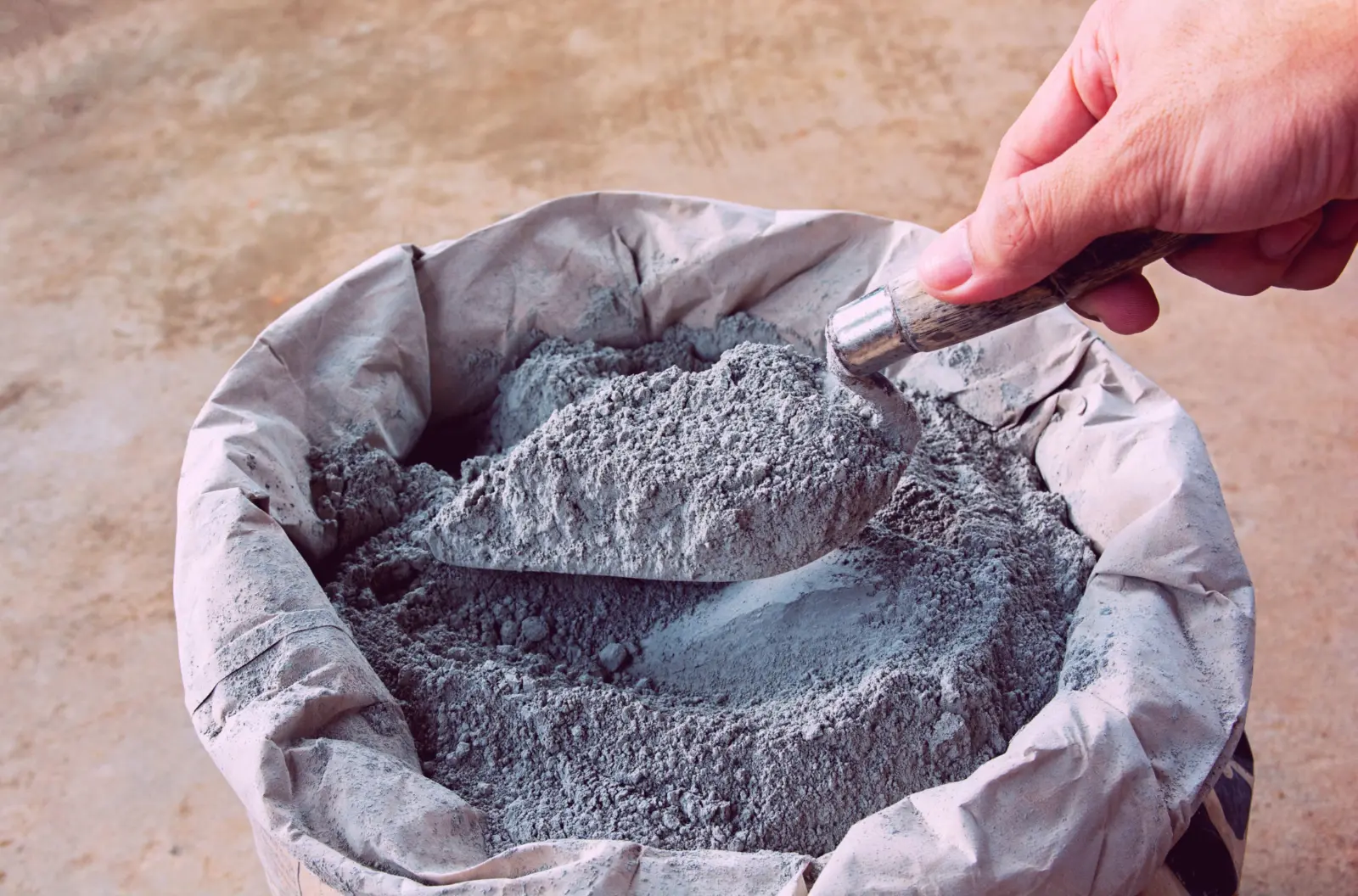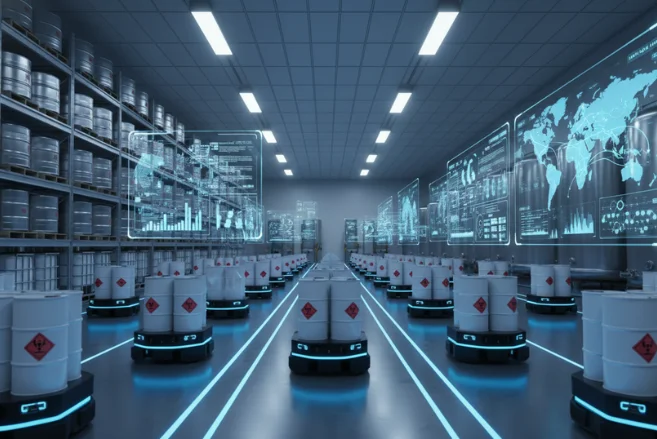Portland cement production involves several key steps that transform raw materials into the final product. Here’s a breakdown of the process:
Crushing and Grinding: The extracted materials are then crushed and ground into a fine powder. This process ensures that the raw materials are uniformly mixed, which is essential for the quality of the final product. The ground materials are then blended in the correct proportions to create what is known as “raw meal.”
Preheating: The raw meal is preheated using hot gases from the kiln. This step is crucial as it reduces the energy required for the subsequent chemical reactions in the kiln. The preheated material is then moved to the kiln for further processing.
Clinker Formation in the Kiln: In the kiln, the raw meal undergoes a series of chemical reactions at high temperatures, reaching up to 1450°C. These reactions lead to the formation of “clinker,” small, dark, and nodular lumps. The kiln plays a vital role in achieving the desired chemical composition and properties of the cement.
Cooling: The clinker is then rapidly cooled using air, which helps in stabilizing the compounds formed during the kiln process. Rapid cooling is essential to preserve the desired characteristics of the clinker.
Grinding and Mixing: After cooling, the clinker is ground into a fine powder. Gypsum, which controls the setting time of the cement, is added during this stage. The final grinding process produces the fine, grey powder known as Portland cement.
Packaging and Distribution: The finished Portland cement is then packaged in bags or stored in silos for bulk distribution. It is now ready for use in various construction projects, where it will be mixed with water, sand, and aggregates to create concrete and mortar.
Portland cement is a versatile building material with a wide range of applications across the construction industry. Its primary uses include:
Concrete Production: Portland cement is the key ingredient in concrete, a composite material made by mixing cement with water, sand, and aggregates like gravel or crushed stone. Concrete is used in constructing foundations, walls, floors, bridges, and roads due to its strength, durability, and ability to withstand heavy loads.
Mortar: Portland cement is also a crucial component of mortar, which is a mixture of cement, water, and fine sand. Mortar is used to bond bricks, stones, and other masonry units together. It provides structural integrity to walls and other masonry constructions, ensuring they remain stable and durable over time.
Plaster and Stucco: Portland cement is used in plaster and stucco, which are applied to walls and ceilings for a smooth finish. These materials provide a hard, durable surface that can be painted or left as is, depending on the desired aesthetic.
Grouts: Portland cement-based grouts are used to fill gaps between tiles, seal joints, and anchor bolts or other structures into place. The grout provides a strong bond that ensures the stability of tiled surfaces and other structural elements.
Precast Concrete Products: Many precast concrete products, such as pipes, blocks, and panels, are made using Portland cement. These products are manufactured in a controlled environment and then transported to construction sites for use. The consistency and quality of precast products make them ideal for various applications, including drainage systems, building components, and decorative elements.
Infrastructure Projects: Portland cement plays a vital role in large infrastructure projects such as dams, bridges, highways, and airports. Its high strength and durability make it ideal for structures that must withstand significant stress, weather, and time.
Repair and Maintenance: Portland cement is commonly used in repair and maintenance work for existing structures. It can be used to patch cracks, repair damaged concrete, and strengthen weakened structures, prolonging their lifespan and ensuring safety.
Soil Stabilization: Portland cement is sometimes used in soil stabilization projects. By mixing cement with soil, engineers can improve the soil’s load-bearing capacity, making it suitable for construction or roadway projects.
Portland cement’s wide range of uses in both structural and non-structural applications underscores its importance in modern construction. Its ability to bind materials together and provide long-lasting durability makes it an indispensable material in building and infrastructure projects worldwide.
Portland cement comes in several types, each tailored to specific construction needs and environmental conditions. These types vary based on their chemical composition, physical properties, and intended uses. Here are the most common types:
Type I – Ordinary Portland Cement (OPC): Type I is the most commonly used Portland cement and serves as the standard option for general construction work. It is suitable for most residential and commercial buildings, including floors, pavements, and reinforced concrete structures. Type I cement provides good strength and durability under normal conditions, making it a versatile choice for a wide range of applications.
Type II – Moderate Sulfate Resistance: Type II cement is formulated to offer moderate resistance to sulfate attacks, which can occur in environments where soil or groundwater contains sulfate ions. This type is commonly used in structures that are exposed to moderate sulfate concentrations, such as drainage structures, piers, and some foundations. It also generates less heat during hydration, making it suitable for large concrete pours where temperature control is essential.
Type III – High Early Strength: Type III Portland cement is designed for situations where early strength development is crucial. It achieves higher strength at an earlier age compared to Type I, making it ideal for projects that require rapid construction or repairs. This type is often used in precast concrete production, fast-track projects, and cold-weather concreting, where accelerated strength gain is beneficial.
Type IV – Low Heat of Hydration: Type IV cement is used in massive concrete structures where the heat generated during hydration must be minimized to prevent cracking. This type is characterized by its low heat of hydration, which reduces the risk of thermal stress. It is typically used in large-scale projects such as dams, where controlling temperature rise is critical to ensuring the structural integrity of the concrete.
Type V – High Sulfate Resistance: Type V Portland cement is specifically designed for environments with high sulfate concentrations, such as coastal areas, industrial sites, and regions with sulfate-rich soils. This type offers the highest level of sulfate resistance, protecting the concrete from deterioration caused by sulfate attacks. It is commonly used in foundations, sewer systems, and other structures exposed to harsh chemical conditions.
White Portland Cement: White Portland cement is a variation of Type I, but it is manufactured using raw materials that produce a white finish rather than the typical gray. It is used primarily for decorative architectural purposes where appearance matters, such as in terrazzo flooring, precast panels, and ornamental concrete structures. The chemical composition is similar to ordinary Portland cement, but the raw materials and manufacturing process are carefully controlled to achieve the desired color.
Blended Portland Cement: Blended Portland cement is produced by mixing Portland cement with supplementary cementitious materials such as fly ash, slag, or silica fume. These blends offer enhanced properties, such as improved workability, durability, and resistance to chemical attacks. Blended cements are often used in sustainable construction practices, as they reduce the overall carbon footprint of the cement by utilizing industrial by-products.
Each type of Portland cement is formulated to meet specific construction challenges, ensuring that the right cement is used for the right application. Understanding these different types allows engineers and builders to select the most suitable cement for their projects, ensuring long-lasting and durable structures.
Portland cement, with its various types and versatile applications, is the backbone of modern construction. From everyday building projects to large-scale infrastructure, this essential material plays a crucial role in shaping our built environment. Understanding the different types of Portland cement and their specific uses empowers builders, engineers, and architects to make informed decisions, ensuring the durability, strength, and longevity of their structures. As the foundation of concrete and mortar, Portland cement continues to be a fundamental element in the creation of safe and resilient buildings worldwide. Whether constructing a simple walkway or an intricate architectural masterpiece, the right choice of Portland cement is key to success.




